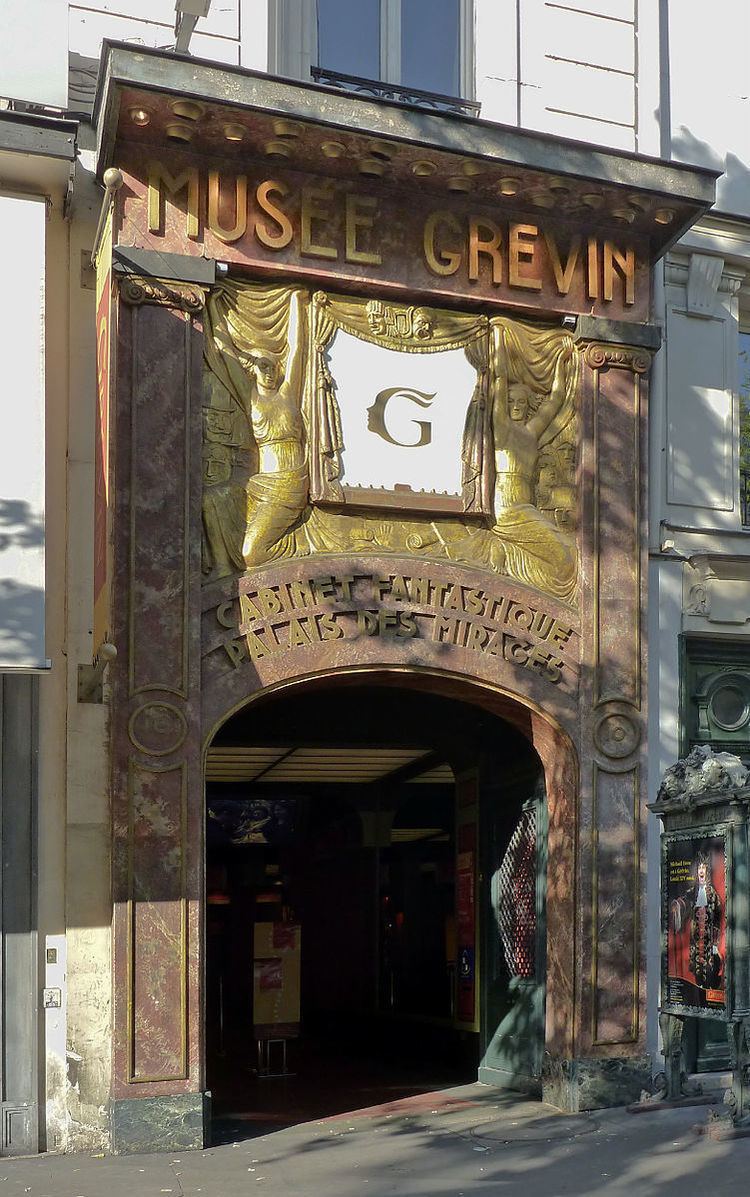Phone +33 1 47 70 85 05 | Parent organization Compagnie des Alpes | |
 | ||
Address 10 Boulevard Montmartre, 75009 Paris, France Stock price GREV (EPA) € 80.00 0.00 (0.00%)21 Mar, 11:29 AM GMT+1 - Disclaimer CEO Béatrice Cristofari (27 May 2014–) Profiles | ||
vlog petit tour au mus e gr vin paris studio bubble tea museum
The Musée Grévin (Euronext: GREV) is a wax museum in Paris located on the Grands Boulevards in the 9th arrondissement on the right bank of the Seine, at 10, Boulevard Montmartre, Paris, France. It is open daily; an admission fee is charged.
Contents
History
The museum was founded in 1882 by Arthur Meyer, a journalist for Le Gaulois, and named for its first artistic director, caricaturist Alfred Grévin. It is one of the oldest wax museums in Europe. Its baroque architecture includes a hall of mirrors based on the principle of a catoptric cistula and a theater for magic shows. The hall of mirrors was built for the Exposition Universelle in 1900. It was originally housed in the Palais des mirages designed by Eugène Hénard.
Louis Aragon wrote poems under the name of Le Musée Grévin (using the pseudonym of François la Colère), published during the Vichy regime by the Éditions de Minuit underground editor.
The first animated film was shown here from 1894 onwards by Charles-Émile Reynaud.
Attractions
The Musée Grévin now contains some 450 characters arranged in scenes from the history of France and modern life, including a panorama of French history from Charlemagne to Napoleon III, bloody scenes of the French Revolution, movie stars, and international figures such as Albert Einstein, Mahatma Gandhi, Shah Rukh Khan, and Pope John Paul II. The tableau of Charlotte Corday murdering Jean-Paul Marat includes the actual knife and bathtub used.
New wax characters are regularly added to the Museum. Figures include Zinedine Zidane, Monica Bellucci, Isabelle Adjani and Nolwenn Leroy.
